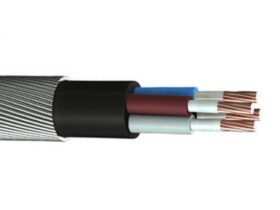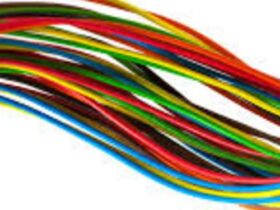Control cables are used for various applications in industries and infrastructure where precise control, signaling, and communication are required. Some of the common uses of control cables include:
- Industrial Automation: Control cables play a crucial role in industrial automation systems, where they are used to transmit control signals between devices such as programmable logic controllers (PLCs), sensors, actuators, and motors. These cables enable precise control and coordination of machinery and equipment in manufacturing plants, assembly lines, and automated processes.
- Instrumentation Systems: Control cables are utilized in instrumentation systems to transmit signals between instruments and control panels. They facilitate the measurement, monitoring, and control of parameters such as temperature, pressure, flow, and level in industrial processes, laboratories, and scientific research settings.
- Process Control: Control cables are essential for process control applications, enabling the transmission of signals to control valves, switches, and other devices that regulate the flow, pressure, and temperature of liquids and gases. These cables ensure accurate and reliable control over various industrial processes, including oil refineries, chemical plants, and water treatment facilities.
- Building Automation: Control cables are employed in building automation systems to enable communication between control panels, sensors, actuators, and devices such as HVAC (Heating, Ventilation, and Air Conditioning) systems, lighting controls, access control systems, and security systems. These cables facilitate the centralized control and monitoring of building functions for energy efficiency, comfort, and security.
- Robotics: Control cables are integral to robotics applications, providing the necessary connections for transmitting signals between robot controllers, motors, sensors, and other components. These cables enable precise control and coordination of robot movements, allowing for tasks such as assembly, welding, material handling, and inspection in industrial and manufacturing settings.
- Transportation and Infrastructure: Control cables are utilized in various transportation systems and infrastructure projects. They are used in control and signaling systems for railways, airports, seaports, and roadways to ensure safe and efficient operations. Control cables enable the transmission of signals for traffic lights, signaling devices, barriers, and control panels.
- Energy and Power Distribution: Control cables are utilized in power distribution systems for control and signaling applications. They are employed for remote control and monitoring of electrical substations, power generation facilities, and electrical grids. Control cables enable the transmission of signals for equipment status, fault detection, and system control in the power industry.
Overall, control cables are essential components in various industries and applications where precise control, signaling, and communication are necessary. They enable the efficient and reliable operation of automated systems, instrumentation, process control, building automation, robotics, transportation, and power distribution systems.












Leave a Reply